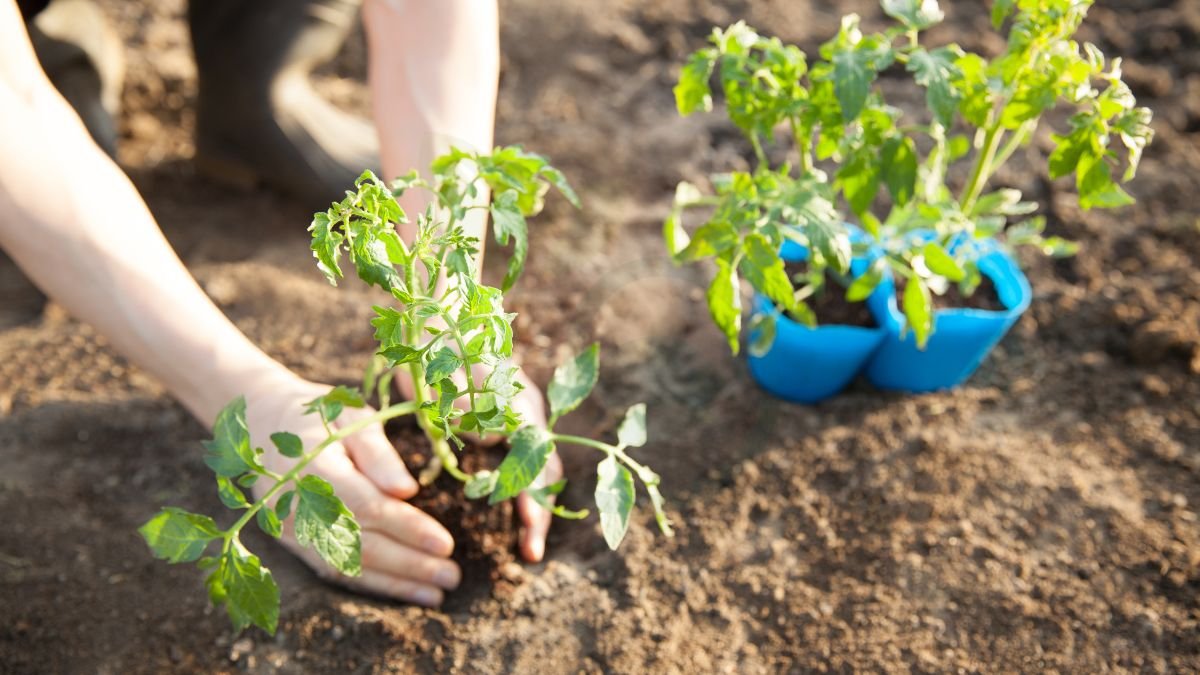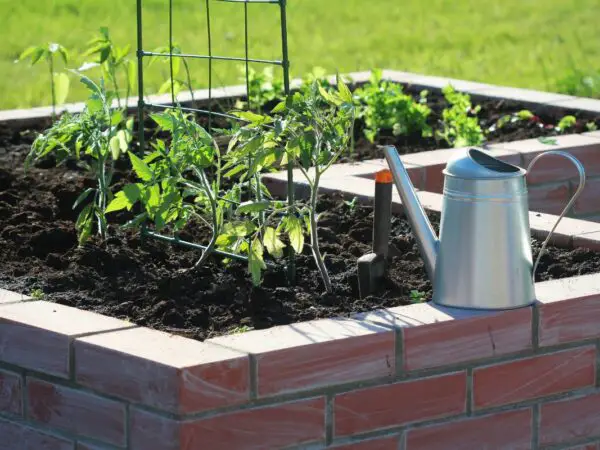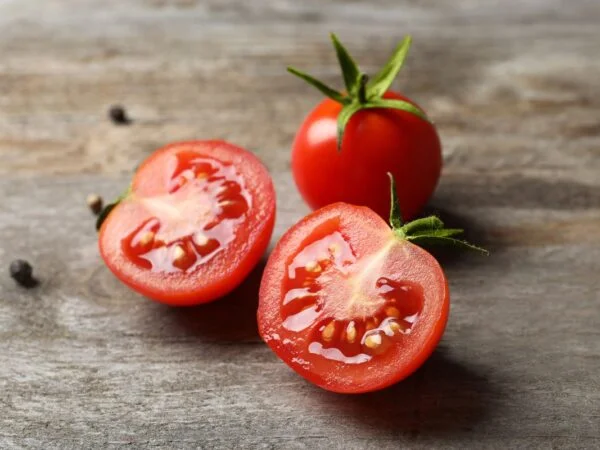Wondering, "How far apart planting tomatoes?" You're in the right place. I'll guide you through the optimal spacing for planting your tomato seeds or seedlings to ensure healthy growth and maximum yield.
When planting tomatoes, spacing is crucial for proper growth and development. Generally, tomato plants should be spaced about 18 to 36 inches apart in rows that are 3 to 4 feet apart. Determining the exact spacing within this range depends on various factors such as the specific variety of tomato, the available space in your garden, and the desired size of the mature plants. Indeterminate varieties, which continue to grow and produce fruit throughout the season, usually require more space between plants compared to determinate varieties. Referencing seed packets or consulting gardening resources can provide more precise recommendations tailored to your specific circumstances.
For further insights on optimizing tomato planting spacing for your garden and maximizing your harvest, explore advanced techniques such as companion planting, soil preparation methods, and pest management strategies. There's a wealth of information available to help you become a successful tomato gardener.
Key Takeaways
- Proper spacing between tomato plants is crucial for their growth and yield.
- Different tomato types require specific spacing to thrive optimally.
- Consider your garden type (raised beds, traditional rows) when determining plant spacing.
- Follow planting guidelines to ensure adequate room for each tomato plant to develop.
- Adjust spacing based on the type of tomatoes you are growing (determinate or indeterminate).
- Evaluate the benefits and limitations of planting tomatoes in containers versus in the ground.
Spacing Importance
Growth Potential
Tomato plants require adequate spacing to reach their full growth potential. Insufficient spacing can lead to competition for nutrients, sunlight, and water. Proper spacing allows each plant to thrive and produce healthy fruits.
To ensure optimal growth, consider the mature size of the tomato variety you are planting. Indeterminate varieties, which continue to grow throughout the season, need more space compared to determinate types. Adequate spacing promotes good air circulation, reducing the risk of diseases.
Yield Maximization
Achieving maximum yield from tomato plants is closely linked to proper spacing. Optimal spacing ensures that each plant receives sufficient resources to develop a robust root system and ample foliage for photosynthesis. This results in higher fruit production per plant.
By giving each tomato plant enough room to grow, you can prevent overcrowding and nutrient competition. Implementing techniques such as staggered planting or using trellises can further optimize space utilization and increase overall yield per square foot.
Disease Prevention
Correct spacing plays a crucial role in preventing diseases in tomato plants. When plants are spaced too closely together, they are more susceptible to fungal infections due to poor air circulation. By providing adequate space between plants, you can minimize humidity levels and reduce the risk of diseases spreading.
Implementing proper spacing practices also facilitates easier access for maintenance tasks such as pruning and inspecting for signs of disease. This proactive approach enables early detection and management of any issues before they escalate and affect the entire crop.
Tomato Types
Determinate Spacing
Determining the ideal spacing for planting determinate tomato varieties is crucial for their growth. Specific guidelines recommend spacing determinate tomato plants approximately 18-24 inches apart. This spacing ensures that each plant has ample room to grow and receive sufficient sunlight.
Proper spacing for determinate tomatoes is essential to prevent overcrowding and promote air circulation, reducing the risk of diseases. Adequate space between plants also facilitates easier harvesting and maintenance tasks. By adhering to the recommended spacing guidelines, gardeners can optimize the yield and health of their determinate tomato plants.
Indeterminate Spacing
Implementing suitable spacing for indeterminate tomato varieties is vital for their development. Understanding the unique spacing requirements for indeterminate tomatoes involves planting them around 24-36 inches apart. This wider spacing accommodates the sprawling growth habit of indeterminate tomatoes.
The impact of spacing on the growth of indeterminate tomato plants is significant. Properly spaced indeterminate tomatoes have ample access to sunlight, allowing for optimal photosynthesis and fruit production. Adequate spacing minimizes competition among plants for nutrients and water, fostering healthier growth and higher yields.
Garden Types
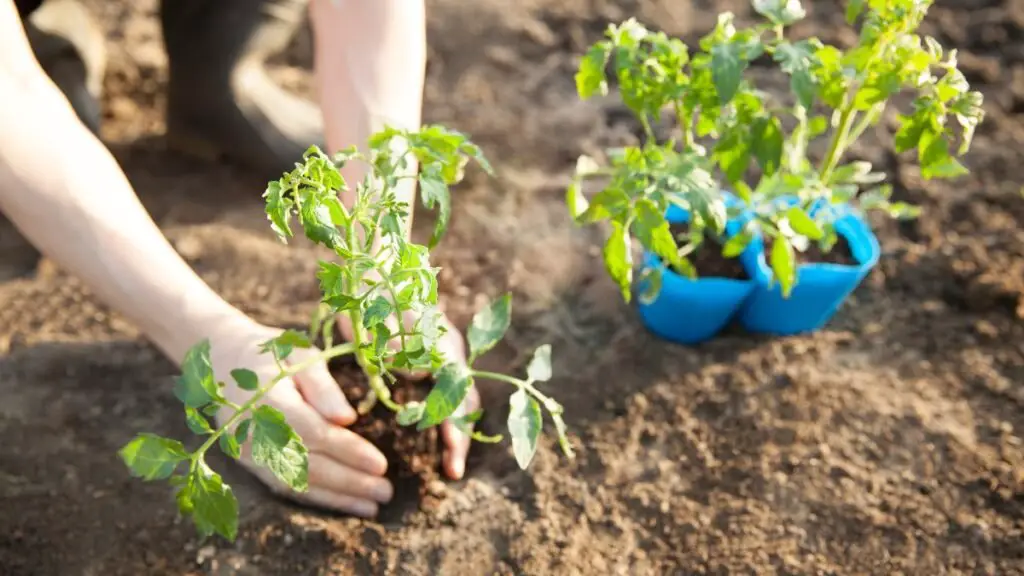
Container Gardens
Container gardens offer flexibility in growing tomatoes, ensuring they receive adequate sunlight and water. Optimize tomato spacing in containers by placing them at least 18 inches apart. This spacing allows each plant to access sufficient nutrients and sunlight for healthy growth.
To effectively space tomato plants in container gardens, consider using large pots or containers with good drainage. Ensure that the soil is well-aerated and nutrient-rich to support optimal growth. Proper spacing also aids in preventing overcrowding, which can lead to disease and pest issues.
The benefits of proper spacing in container gardening for tomatoes include improved air circulation, reduced competition for resources, and easier maintenance. By following recommended spacing guidelines, you can promote healthier plants and increase overall yield.
In-Ground Planting
When planting tomatoes in the ground, it is essential to implement proper spacing techniques to facilitate optimal growth. Determine the appropriate distance between tomato plants based on their mature size and variety. Generally, space indeterminate varieties around 24-36 inches apart.
Understanding the spacing requirements for planting tomatoes in the ground is crucial for maximizing productivity. Adequate space between plants allows for better airflow, reduces the risk of fungal diseases, and promotes even ripening of fruits. Proper spacing also facilitates access to sunlight, which is essential for photosynthesis and fruit development.
Exploring the advantages of following recommended spacing in ground planting reveals increased yields, healthier plants, and easier maintenance practices. By adhering to proper spacing guidelines, you can create an environment that supports robust root development and minimizes competition among plants.
Planting Guidelines
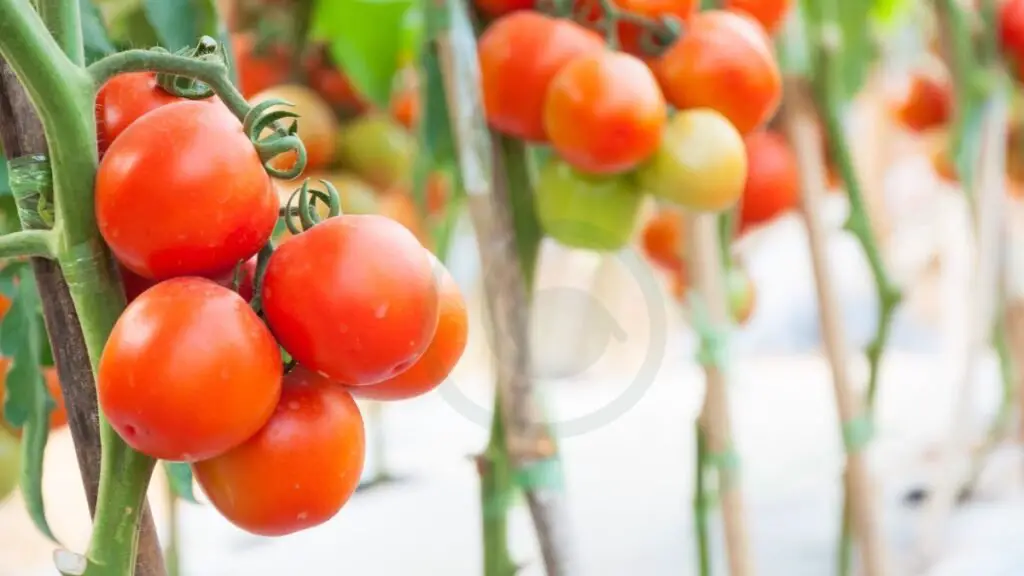
Spacing Techniques
Spacing tomato plants properly is crucial for their growth and productivity. Different techniques can be used to achieve optimal spacing, such as the square foot gardening method. This technique involves planting tomatoes one foot apart in rows and columns, maximizing space usage efficiently.
To ensure healthy growth, it's essential to understand the importance of correct spacing. Proper spacing allows each plant to receive adequate sunlight, water, and nutrients. Without proper spacing, overcrowding can lead to competition among plants for essential resources, stunting their growth.
Exploring different methods for optimal spacing is key to successful tomato cultivation. One popular method is the wide-row planting technique, where tomatoes are planted in rows that are wider than traditional spacing. This method promotes better airflow between plants, reducing the risk of diseases.
Planting Depth
Determining the appropriate planting depth is critical for the development of tomato plants. Planting too shallow can result in weak root systems, affecting the plant's stability and nutrient uptake. Conversely, planting too deep may hinder oxygen intake and lead to root rot.
Understanding how planting depth influences tomato growth is essential for gardeners. The roots of tomato plants develop along the stem buried underground, enabling them to absorb water and nutrients effectively. Optimal planting depth ensures that roots establish themselves securely for robust growth.
Exploring the impact of planting depth on overall plant health reveals its significance in determining crop yield. Shallow planting can make plants vulnerable to environmental stresses like extreme temperatures or drought conditions. On the other hand, deep planting provides stability and support for vigorous growth.
Spacing by Type
Determinate Plants
Determinate tomato plants have a specific growth pattern, reaching a predetermined height and producing fruit within a concentrated period. These plants are ideal for smaller spaces and container gardening. They require less pruning and support due to their compact size. To care for determinate plants, provide consistent watering and feed them with a balanced fertilizer.
Understanding the unique needs of determinate tomato varieties is crucial for successful cultivation. Determinate tomatoes benefit from regular pruning to maintain airflow and prevent diseases. They thrive in well-draining soil rich in organic matter. Spacing determinate tomato plants around 12-24 inches apart allows adequate room for growth and airflow.
Learning how to best care for and space determinate tomato plants involves considering their growth habits. It's essential to provide support, such as stakes or cages, to prevent the plants from bending under the weight of ripening fruit. Regularly inspecting determinate tomatoes for pests and diseases helps maintain plant health.
Indeterminate Plants
Indeterminate tomato plants continue growing throughout the season, producing fruit until frost sets in. These plants offer a prolonged harvest period, making them suitable for larger gardens. Indeterminate tomatoes require regular pruning to manage their vigorous growth.
Discovering the distinct features and care tips for indeterminate tomato plants is essential for maximizing yield. Indeterminate tomatoes benefit from consistent watering to ensure proper fruit development. Supporting these tall plants with sturdy stakes or trellises prevents breakage under heavy fruit loads.
Understanding the growth patterns and requirements of indeterminate tomatoes is key to successful cultivation. Pruning indeterminate tomatoes helps redirect energy towards fruit production instead of excessive foliage growth. Providing adequate spacing between indeterminate tomato plants promotes air circulation and reduces disease risks.
Learning effective spacing strategies for indeterminate tomato varieties involves giving each plant ample room to grow vertically and spread out horizontally. Spacing indeterminate tomatoes around 24-36 inches apart allows sufficient access to sunlight and airflow. Regularly feeding these plants with a balanced fertilizer supports healthy growth and abundant fruit production.
Container vs Ground
Container Spacing
When planting tomatoes in containers, optimize spacing to ensure healthy growth and ample space for each plant. Proper spacing is crucial for maximizing yield and preventing overcrowding.
To achieve successful container gardening, it's essential to understand the importance of adequate spacing between tomato plants. Insufficient space can lead to competition for nutrients, sunlight, and water, hindering plant development.
For optimal results when planting tomatoes in containers, follow specific recommendations for spacing tomato plants, typically ranging from 18-36 inches apart. This spacing allows each plant to receive sufficient resources for robust growth.
Ground Spacing
In ground cultivation, implementing correct spacing guidelines is key to fostering healthy tomato plants. Adequate spacing ensures that each plant has ample room to spread its roots and access essential nutrients from the soil.
Understanding the significance of proper spacing in ground planting is vital for promoting optimal plant growth and productivity. Well-spaced plants experience reduced competition for resources, resulting in stronger plants with higher yields.
Following recommended spacing in ground planting offers various benefits, including improved air circulation around plants, which helps prevent diseases. Proper spacing facilitates easier maintenance tasks such as watering and pruning.
Signs of Overcrowding
Reduced Yield
Insufficient spacing between tomato plants can reduce yield due to competition for nutrients, water, and sunlight. Planting tomatoes too close together hinders air circulation, leading to increased humidity and potential disease spread. To maximize production, ensure each tomato plant has plenty of space to grow.
Improper spacing can limit root development and nutrient absorption, resulting in stunted growth and smaller fruits. When tomatoes are overcrowded, they struggle to access essential resources, impacting their overall health and productivity. To prevent reduced yield, maintain adequate distance between plants during planting.
To avoid decreased tomato yield caused by overcrowding, follow proper spacing guidelines based on the variety of tomatoes being grown. Providing adequate room for each plant promotes optimal growth conditions and ensures efficient utilization of resources. Adequate spacing allows for better airflow and light penetration, reducing the risk of diseases.
Disease Signs
Overcrowded tomato plants are more susceptible to diseases due to limited airflow and increased moisture retention. Common signs of diseases include yellowing leaves, spots on foliage, wilting, and fruit rot. Proper spacing helps reduce the risk of infections by promoting ventilation around the plants.
Improper spacing can create an environment conducive to fungal diseases such as blight and powdery mildew. When plants are crowded together, it becomes easier for pathogens to spread from one plant to another. By maintaining appropriate distances between tomato plants, you can minimize the likelihood of disease outbreaks.
The correlation between spacing and disease manifestation in tomatoes is significant; overcrowded plants are more likely to experience issues such as early blight or blossom end rot. Properly spaced plants have better air circulation, which helps prevent the buildup of moisture that contributes to disease development. By spacing your tomato plants correctly, you can proactively reduce the risk of infections.
Pest Prevention
Spacing Strategy
Develop a strategic approach to spacing tomato plants effectively. Consider the optimal distance between each plant for proper airflow and sunlight exposure. Experiment with different spacing patterns to find the most suitable one for your garden.
Implement a well-thought-out spacing strategy to ensure that each tomato plant has ample room to grow without competing for resources. Proper spacing can help prevent the spread of diseases and allow for better pest management. Explore various guidelines on spacing, such as planting tomatoes 18-24 inches apart in rows.
Healthy Practices
Adopt healthy practices when it comes to spacing your tomato plants. Ensure that you provide adequate space between each plant to promote air circulation and reduce the risk of fungal diseases. Remember that overcrowding can lead to increased humidity levels, creating an ideal environment for pests.
Understand the importance of incorporating good practices in tomato spacing to maintain the overall health and vigor of your plants. By following proper spacing guidelines, you can minimize the chances of pest infestations and improve the quality of your tomato harvest. Consider creating a checklist for healthy planting practices, including regular pruning and monitoring for signs of overcrowding.
Maximizing Yield
Optimal Spacing
To maximize tomato plant growth, it is crucial to determine the optimal spacing between each plant. The recommended spacing for planting tomatoes is typically around 18-24 inches apart. This distance allows each plant to receive adequate sunlight, air circulation, and nutrients from the soil.
Achieving optimal spacing plays a significant role in the overall health and productivity of tomato plants. When plants are spaced correctly, they have ample room to grow without competing for resources. This results in stronger stems, healthier foliage, and ultimately higher yields of quality fruits.
Adhering to the recommended spacing guidelines brings several benefits for tomato growers. Proper spacing reduces the risk of diseases by improving air circulation around plants, which helps prevent issues like fungal infections. It facilitates easier access for pruning, watering, and harvesting tasks, leading to more efficient plant management throughout the growing season.
Care Tips
For maintaining healthy tomato plants, regular care and attention are essential. Ensure tomatoes receive sufficient sunlight (at least 6-8 hours per day) and well-draining soil with adequate moisture levels. Water consistently to keep the soil evenly moist but not waterlogged.
Throughout the growth cycle of tomatoes, it is crucial to monitor for any signs of pests or diseases. Early detection can prevent widespread infestations that may significantly impact plant health and yield. Consider using organic pest control methods such as neem oil or companion planting with marigolds to deter common pests naturally.
To ensure the well-being and productivity of tomato plants, provide support as they grow taller by staking or using cages. This prevents branches from breaking under the weight of developing fruits and ensures proper airflow around the plants. Regularly prune off any yellowing or diseased leaves to maintain overall plant vigor.
Summary
In planting tomatoes, spacing is crucial for healthy growth and optimal yield. Different tomato types and garden setups require specific spacing guidelines to prevent overcrowding and promote good airflow. By following the planting recommendations based on the type of tomatoes and your gardening method, you can prevent pest infestations and maximize your harvest. Signs of overcrowding should be promptly addressed to ensure the plants thrive. Consider container gardening for limited spaces, but always monitor for signs of stress or disease.
To enhance your tomato-growing experience, implement proper spacing techniques, maintain vigilance against pests, and adjust planting strategies as needed. By following these guidelines, you can enjoy a bountiful harvest of delicious homegrown tomatoes. Happy gardening!
Frequently Asked Questions
How important is the spacing of tomato plants?
Proper spacing ensures optimal growth, airflow, and sunlight exposure for each plant. It helps prevent diseases by reducing moisture retention and allows for efficient harvesting.
What are the different types of tomatoes to consider planting?
Consider varieties like determinate, indeterminate, heirloom, cherry, grape, or beefsteak tomatoes based on your preferences for size, taste, and growing habits.
Should I plant tomatoes in containers or directly in the ground?
Containers offer versatility and space-saving options for smaller areas. Ground planting provides stability and better access to nutrients from the soil.
How can I prevent pests when planting tomatoes?
Implement cultural practices like crop rotation, using natural predators, applying organic pesticides sparingly, and regularly inspecting plants for early signs of infestation.
What signs indicate that tomato plants are overcrowded?
Yellowing leaves, stunted growth, reduced fruit production, and increased susceptibility to diseases are common signs of overcrowding in tomato plants. Proper spacing can help alleviate these issues.
Image Source: Paid image from CANVA

